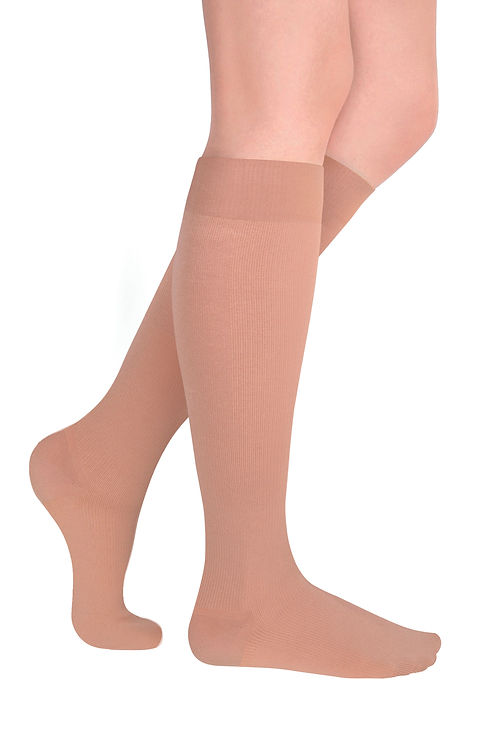Compression Stockings

Compression stockings are extremely comfortable, and help with tissue swelling, further venous damage, prevention of thrombosis (eg: in flight), further dermatological changes, and prevention of pain.
Key Benefits of Compression Stockings:
-
Improved Blood Circulation: Compression stockings exert gentle pressure on the legs, aiding blood flow back to the heart and preventing blood from pooling in the veins.
-
Reduced Swelling: By promoting better circulation, compression stockings help reduce swelling, particularly in the ankles and lower legs.
-
Prevention of Varicose Veins: The supportive pressure of compression stockings can help prevent the development and progression of varicose veins.
-
Relief from Leg Fatigue: Compression therapy can alleviate feelings of heaviness and fatigue in the legs, making them an ideal choice for individuals who spend extended periods on their feet.
-
Post-Surgical Support: Compression stockings are often recommended post-surgery to aid in recovery and minimize the risk of complications.
How it works:
Our vascular system can be broken down into 2 components, arterial and venous system. The arterial system is the system which moves blood away from the heart. The heart is the main muscle driving the blood away. The venous system is the system which takes the blood back to the heart. The main muscle in returning blood to the heart is calf. The venous system also has valves located within the veins to prevent back-flow of blood. Overtime valves may become damaged, often presenting as spider veins (telangiectasia) or varicose veins. Veins become distended often appearing to pop out of the skin and may become painful. Risk factors for varicose veins, edema, spider veins, deep vein thrombosis or venous insufficiency are: hereditary, occupational (long periods of standing or sitting), frequent travel, pregnancy, etc. When venous insufficiency is present more fluid/blood accumulates in the ankle region.
A patient with good venous health, standing or sitting has a venous pressure of approx. 90mmHg (millimeters of mercury). A patient with a compromised venous system will have a much higher pressure in this area. Clinically this presents with swelling. Compression stockings are graduated, with a high amount at the ankle region and lower amount as the stocking ascends the leg.
This is why compression stockings come in ranges, eg: 15-20mmHg, 20-30mmHg, 30-40mmHg, or 40-50mmHg. The different grades of compression mean they are assisting with venous flow by that much.
Compression Stockings in Sports
Compression stockings have become tremendously popular in sports. Most notably in long distance sports, such as running or cycling. Compression garments are also seen in basketball, weightlifting, hockey, baseball and soccer. Studies show that compression helps with reducing muscle fasciculations, fatigue, and lactic acid. They also help maintain adequate blood flow allowing for peak tissue oxygen perfusion.